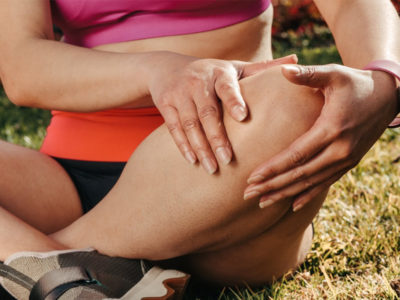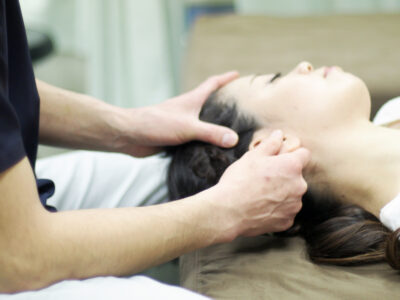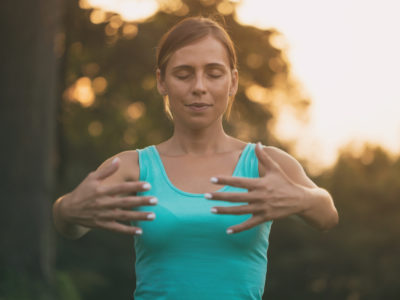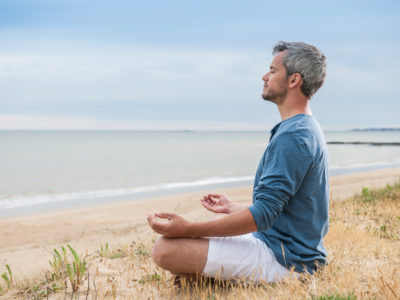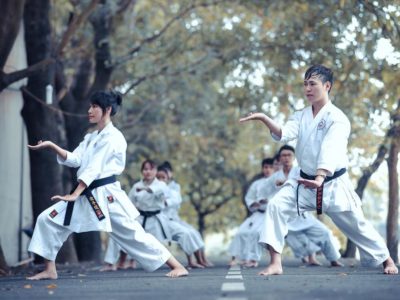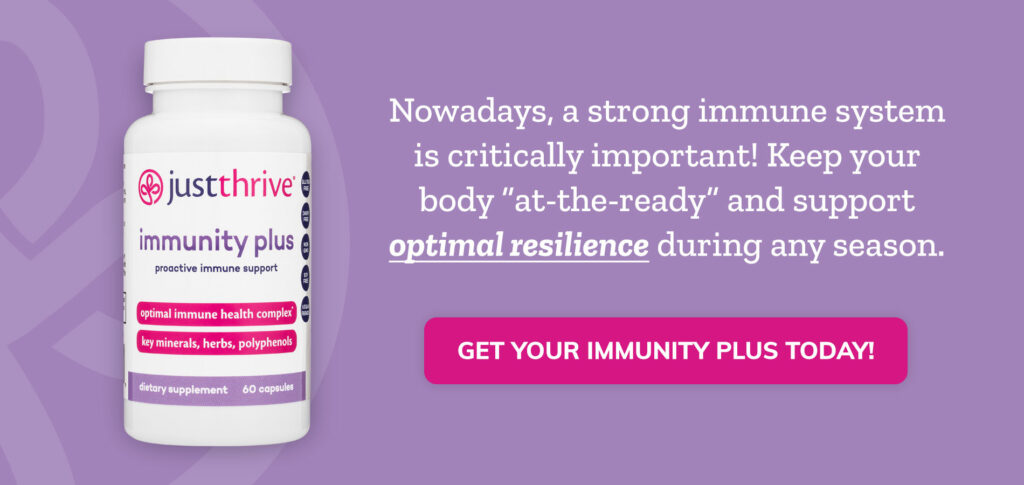Table of Contents[Hide][Show]
“I hate needles!” At some point, you’ve probably heard someone say this phrase, usually before a trip to the doctor’s office. You might have even said it yourself. I’ve certainly heard my own child say it…frequently! He’s been terrified of getting shots since he was little. So why did I decide to make an acupuncture appointment for him?
The answer is simple; I had utter faith that it would work, and (perhaps more importantly) that it wouldn’t hurt.
Why was I so sure? To answer your question, let’s look at how acupuncture works, its benefits, and its risks.
What Is Acupuncture?
Acupuncture is an ancient practice from traditional Chinese medicine that’s been used to treat several medical conditions for over 2,500 years. In the past few decades, it’s made its way over to the west and gained popular acceptance in health care as a form of complementary or alternative medicine.
During your treatment, your acupuncturist will insert metal, hair-thin needles at specific acupuncture points in your body. These sterile needles are considered medical devices and have to be FDA-approved.
Acupuncture is minimally invasive. And it’s almost entirely pain free; most people barely feel it or feel just a small amount of pressure or a dull ache.
Acupuncture Philosophies
Before we discuss how this centuries-old healing art works, let’s look at the differences between the Chinese and western philosophies when it comes to acupuncture.
The Chinese Acupuncture Philosophy
The traditional Chinese acupuncture approach to health is less about medicine and more about balancing the flow of energy within your body.
Chinese acupuncturists believe that the human body is filled with a life force known as qi or chi (both pronounced “chee”). Qi flows through your body contained in meridians—invisible (non-physical) pathways that allow for a balanced life force.
When your qi is flowing strongly and directed to all the right places, that translates to you being mentally, emotionally, and physically healthy. Conversely, imbalanced or blocked qi is the cause of disease and illness.
To re-balance a person’s qi, an acupuncturist inserts needles on acupuncture points along the meridians. There are over 2,000 of these acupuncture points, all uniquely connected to different bodily ailments. Each specific point is connected to a meridian. Inserting the needles at the right spot and in the right combination is believed to rebalance the flow of qi (and the overall health of the body.)
Related
Pain Management Techniques: The Top Natural Remedies
Learn more about the best natural pain management techniques, how they work, and what pain they can help with the most.
The Western Acupuncture Philosophy
As acupuncture has become more common in the western world, medical professionals have put their own spin on it. Instead of focusing on life force, they take a neurological approach to acupuncture.
Although not clinically proven, Western acupuncturists believe that acupuncture points can stimulate the central nervous system. Therefore, inserting needles at these points can cause the release of biochemicals into the muscles, spinal cord, and brain that can boost your body’s healing capabilities by stimulating the immune system. This release of biochemicals can also provide chronic pain relief, and promote emotional and mental wellbeing.
How Acupuncture Treatment Works
Chinese and western medicine approaches aren’t at loggerheads with one another. Most acupuncture practitioners blend the two philosophies to come up with their unique take. But the general approach used by acupuncturists is similar.
Initial Consultation
Before they can design your treatment plan, your acupuncturist will meet with you for an initial consultation that can last up to an hour. They’ll ask you questions about your symptoms, lifestyle, health habits, and diet.
If your acupuncturist adheres to the more traditional eastern practices, they’ll also look for clues as to the imbalance of your qi. To do so, they may also examine:
- Your tongue’s shape, coating, and color
- Your face’s shape and color
- Your pulse (measured at your wrist) for strength and rhythm
Based on your consultation and a physical examination, you’ll receive a detailed treatment plan. Your practitioner may recommend one to two acupuncture sessions per week, for three to four weeks. But this can differ depending on your condition and its severity. Chronic conditions may need a longer treatment plan.
Treatment
The first thing everyone asks is: Will it hurt? The only correct answer is: probably not.
No ethical acupuncturist can guarantee a pain-free treatment, because everyone’s pain tolerance is different. And when stimulated by needles, some acupuncture points might feel different than others.
Prior to the treatment, you may be given a robe, similar to what you get in any doctor’s office. Then you’ll lie down on your back, stomach, or side, depending on where the needles will be inserted.
In my son’s case, his injury was to his neck, but he had needles inserted into his arm and hand along the meridian that reached all the way up to his neck.
Your acupuncturist will then insert sterile, single-use, FDA-approved acupuncture needles at the optimal points. A typical treatment can consist of anywhere from five to twenty needles.
Once all the needles have been inserted, your acupuncturist may manipulate them. They might move them, twirl them, or apply heat or electricity for greater effect.
Try to relax while the needles are in place! After about 10 to 20 minutes, the needles will be removed.
Post-Treatment
Everyone’s body (and symptoms) responds differently to acupuncture. You’re just as likely to feel energized as you are to feel relaxed or even sleepy. Your symptoms might disappear quickly or may continue to linger for a while longer.
What Can Acupuncture Treat?
Acupuncture may not be a cure-all for every pain and condition, but there are plenty of physical, mental, and emotional health conditions for which it can be used.
Research shows that acupuncture has been proven to help:
- Low back pain
- Neck pain
- Osteoarthritis
- Knee pain
- Fibromyalgia
- Headaches (migraine, chronic, and tension headaches)
The World Health Organization (WHO) also published a list of 117 conditions for which acupuncture has been proven effective. This includes:
- Allergies
- Anxiety
- Dental pain
- High or low blood pressure
- Insomnia
- Nausea and vomiting due to chemotherapy
- Obesity
- Painful menstrual cramps
- Plantar heel pain
- Sciatica
- Some digestive and gastric issues
- Sprains
- Stroke rehabilitation
Related
No Way! Can Massaging Your Ears Help With Weight Loss?
Believe it or not, ear acupressure can actually help you shed off some extra weight and make those jeans fit a little looser. Read on to find out.
Possible Acupuncture Side Effects
Like any medical treatment, acupuncture isn’t risk-free. There is always the chance of a side effect. However, when compared to the long lists of side effects handed out with prescribed medications, acupuncture’s potential impact can seem much more manageable.
These are possible side effects at the needle insertion point:
- Soreness
- Minor bruising
- Light bleeding
There are some other risks to keep in mind. If any of these apply to you, let your practitioner ahead of time so they can make adjustments if necessary.
- If you have a bleeding or clotting disorder or are taking blood thinners, you’ll have an increased risk of bruising and bleeding.
- Also, as mentioned above, sometimes mild electric impulses are sent through the needles. If you have a pacemaker, this could cause it to malfunction.
- Certain acupuncture sites are used to induce labor. If you’re pregnant, or think you might be, this could result in a premature delivery.
How Acupuncture Benefits Athletes
How can athletes use the power of acupuncture to improve their game? Well, it’s not an alternative to old-fashioned training, but it can assist an athlete who is already on a rigorous regimen.
One of the best uses could be for treating muscles and joints in a particular area to prevent potential injury while training. Injury prevention is one of the easiest ways to make sure an athlete will never get off of his or her training schedule. After all, it’s hard to train when your ankles are strained or a muscle is torn.
If an athlete suffered an injury already and is working on healing, acupuncture may be a step in the right direction because it can help with the pain, help increase range of motion, and accelerate healing. Generally, acupuncture is excellent for injury treatment because it can help decrease inflammation, swelling and bruising, improve circulation, relax muscles, and relieve spasms.
Acupuncture can help the patient achieve a sense of balance, which also instills a sense of calm and can ease stress and anxiety. This is perfect for preparing and getting relaxed for a big game or performance.
Even more beneficial is acupuncture’s ability to increase awareness. No matter what your sport, situational awareness and “being present” is key.
During training, the immune system of an athlete can take a hit as the body is put under constant stress. Acupuncture has been shown to increase T-cell levels and help increase the patient’s immune system.
Basketball players were used in a study to see how quickly athletes were able to recover with the help of acupuncture. The blood lactic acid level, heart rate, and oxygen consumption of the acupuncture group was significantly lower than for the other groups.
There are tons of potential benefits for athletes who choose to use acupuncture. Though be warned that the effectiveness of acupuncture varies from person to person. Some people may see performance gains, while others may not.
Our Acupuncture Journey
Now that we’ve done our “deep dive” into acupuncture, I’ll share the rest of my son’s recent foray into acupuncture as a real-life example of the difference it can make.
A little backstory: my youngest child is a gymnast. And that comes will all types of falls, bruises, and, yes, injuries. Luckily, this particular incident wasn’t anything major or traumatic. Nothing broken or sprained. Instead, he had “landed funny” and, as a result, could barely move his shoulders or turn his face without excruciating pain.
As a personal trainer, I’ve seen these types of injuries before. It would take days of heat and ice therapy, plus slow—and possibly somewhat painful—stretches until he would regain his full range of motion. In the meantime, he would be in quite a bit of pain. There was nothing modern medicine could do to speed up his recovery.
This injury made my son the perfect candidate for acupuncture therapy.
His acupuncturist began the treatment by gently examining the sides and back of his neck. She also checked his pulse and asked questions about how he felt and how the injury had occurred.
She applied some essential oils—lavender, to calm his anxiety over his first acupuncture treatment—at his pulse points. He was on his back the entire time as she inserted needles. He barely even reacted; that’s how painless the treatment was.
Related
14 Essential Oil Alternatives To Medicine
When you’re not feeling well or just need a health boost, have you considered giving essential oils a try? Learn more about the best essential oils substitutes for medicine and how your body can benefit from them!
Only one needle was inserted into his neck. The rest were on his arms, shoulders, and even his hand. That last one, the one in his hand, was the only one that made him jump a little. He later told me it was the only one he really felt.
Once all the needles were in, his practitioner tapped and twirled them each a few times, then let him relax and listen to music before removing them.
Was his neck healed instantly? No. But right after the treatment, he could roll his neck and shoulders with very minimal pain. And he regained full mobility within 24 hours, which would’ve been next to impossible without acupuncture.
The difference between his pre- and post-treatment range of motion and pain was undeniable. We’ve since discussed using acupuncture for his near-constant soreness (remember, he’s a gymnast!) and my needle-shy child surprised me by being completely on board with it.
His experience made him an acupuncture enthusiast and took away his fear of needles.
Final Thoughts
If you’re looking for a proven, integrative medicine for pain, there are many possible benefits of acupuncture and few side effects. Done correctly, it’s a safe and effective alternative to painkillers and addictive opioids. And with 2,500 years of results reinforced by recent medical studies, there’s no reason to doubt that acupuncture can work for a long list of conditions.
But can it help you with your health or rehab goals? That’s something to discuss with your acupuncturist at your initial consultation.
Don’t let skepticism or fear of pain hold you back from exploring this tried-and-true health and wellness alternative.
You May Also Like…

